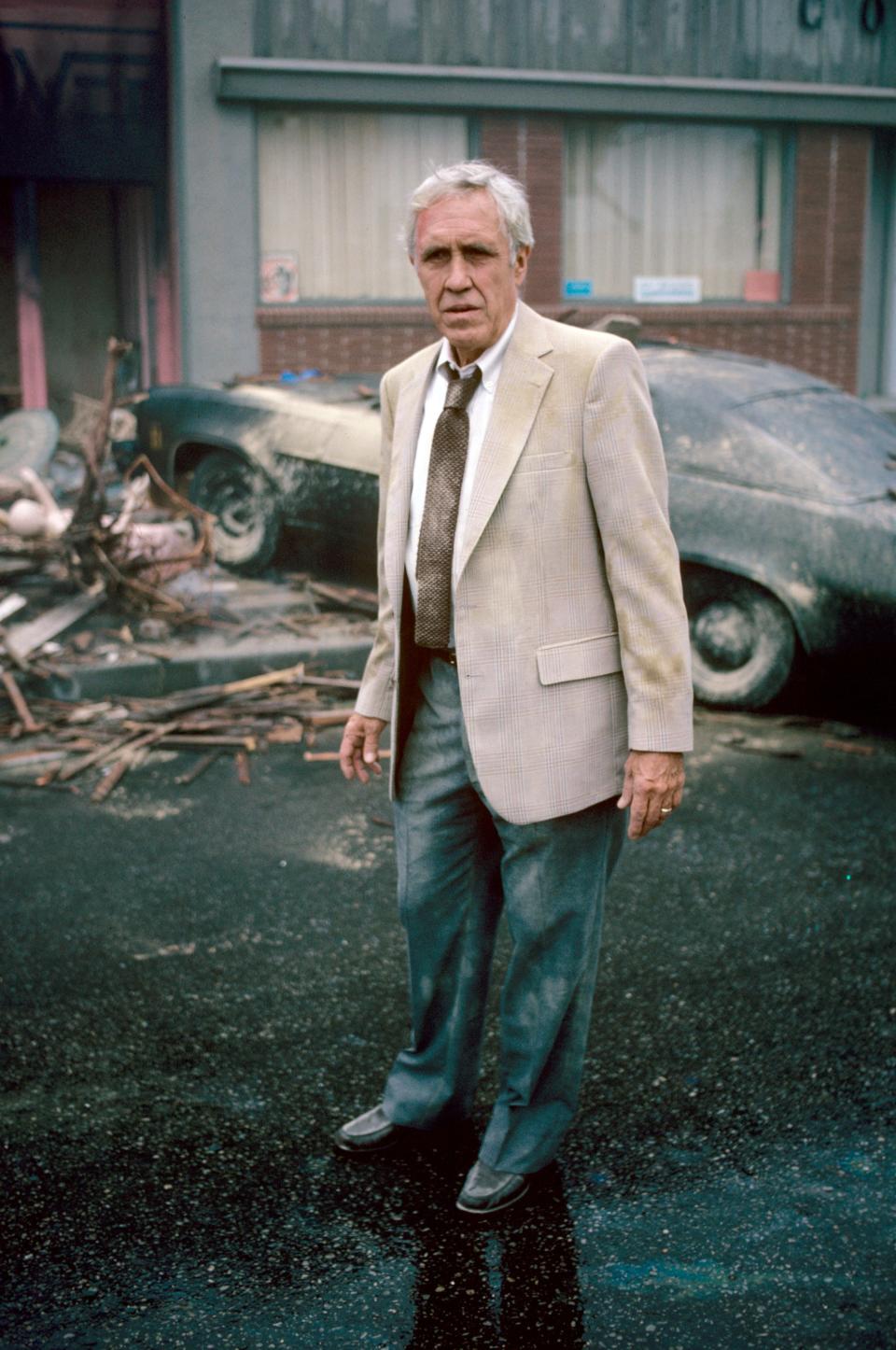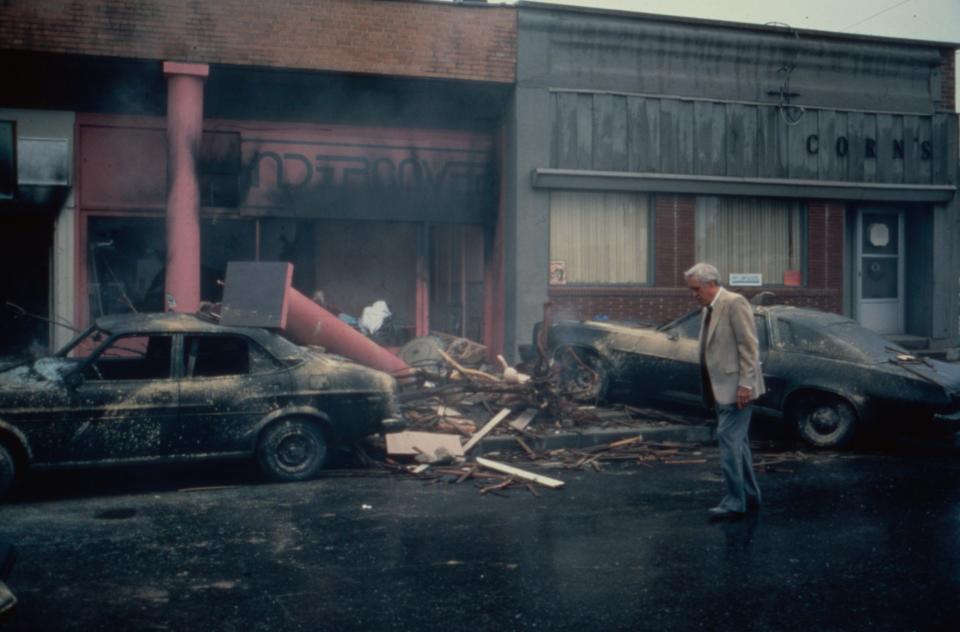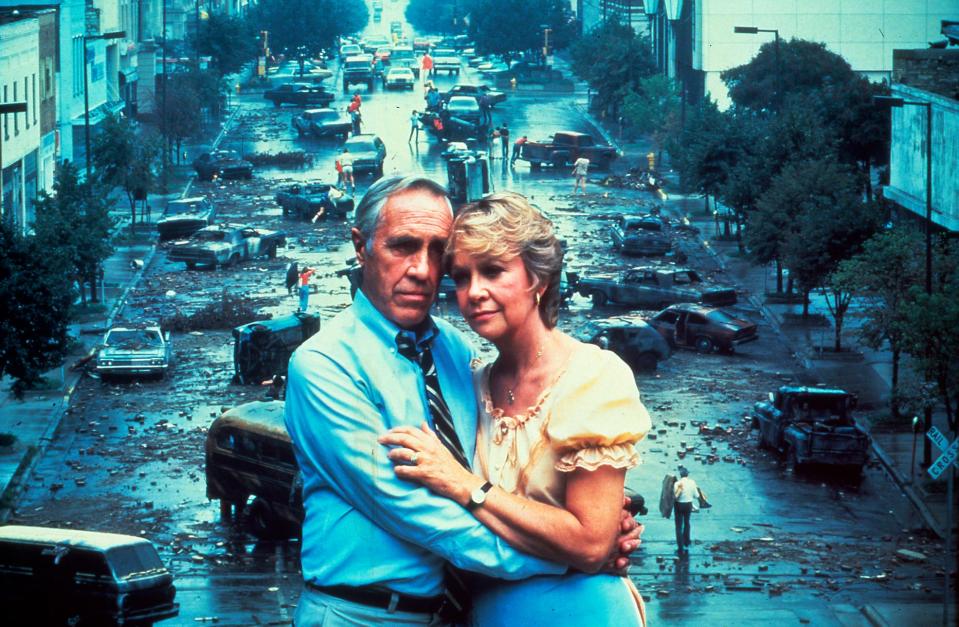A slice of television history: Why 100 million viewers tuned in to watch a TV movie in 1983
- Oops!Something went wrong.Please try again later.
It wasn’t the day after a TV movie that aired 40 years ago this month that network executives, advertisers, mental health experts and parents across the country were worried about.
It was the night of – specifically, how to handle the expected emotional fallout among those tuning in to watch a graphic two-hour-plus film about a nuclear attack on Middle America and its bleaker-than-bleak depiction of the life that followed.
Advance media screenings had been held to quell fears. Educational guides (and guidelines) were distributed, offering exercises “to help people prepare for the experience.” A network advisory was planned urging parental discretion, and a toll-free number was set up to offer phone counseling as the film unfolded.
“The Day After” had become the most anticipated and most-talked-about TV event of the year. The question was whether viewers could get through it.

How 'The Day After' tapped into fears of a nuclear holocaust
Two years in the making, “The Day After” was conceived at ABC in the wake of the 1979 film “The China Syndrome,” an Oscar-nominated fictional account about a near-meltdown at a California nuclear power plant that starred Jack Lemmon and Jane Fonda. A cautionary tale, the new film would explore the idea of everyday life for ordinary Americans in the aftermath of a nuclear strike in their own backyard.
It stirred considerable caution in development, too, from the U.S. Department of Defense over the script’s politics; from directors who turned down the project due to the material; and from ABC’s censors over how the catastrophe would be depicted onscreen.
Ultimately, director Nicholas Meyer (“Star Trek: The Wrath of Kahn”) was hired, and the project was filmed in the summer of 1982 in and around the modest college town of Lawrence, Kansas, where much of “The Day After” was set. Jason Robards headed an otherwise then-lower-profile cast (John Lithgow, JoBeth Williams, John Cullum, Steve Guttenberg) that also folded Kansas locals into small roles and crowd scenes for heartland authenticity.
Because Edward Hume’s heavily researched script was rooted in political theater – escalating tensions between NATO forces and Warsaw Pact countries leads to U.S. and Soviet brinksmanship that results in a nuclear exchange – the focus of the film was the human cost of war for those unlucky enough to live near Russian-targeted U.S. weapons silos in the Midwest.
Preceded by a lengthy sequence of increasing public panic as the politics play out on the news, the attack scene that's the heart of the film comes about one-third of the way into “The Day After.” While editing the film, there were debates about what and how much to show: Meyer and Hume were adamant about presenting a realistic if graphic experience of nuclear destruction, and network representatives and advertisers were concerned that some scenes would be too disturbing.

'The Day After' was one of the most hyped projects in TV history
Advance promotion led to saturation coverage during the fall of 1983, and by the time “The Day After” aired on Nov. 20, it had become one of the most publicized projects in TV history. A full-page ad in TV Guide summed up the national fervor: “They told us it would be impossible to make this movie. They told us it would be impossible for you to watch it. We hope nothing is impossible.”
In the end, what was seemingly impossible about “The Day After” were the ratings: More than 100 million people tuned in, making it the most watched TV movie ever – a record that still stands today. What they saw was, as the ad also promised, “beyond imaging”: an Emmy-winning special-effects driven eleven-minute sequence that begins with a U.S. missile launch and ends with multiple mushroom clouds over Kansas and Missouri. In between, harrowing scenes of adults and children vaporized, streets and farms swallowed by flames, and homes, buildings and cities reduced to rubble. (Once the detonation sequence began, ABC aired no commercials for the remainder of the film.)

"Who should watch it?” wrote Tom Shales in The Washington Post in his advance review. “Everyone should watch it. Who will be able to forget it? No one will be able to forget it.” (Among everyone: President Ronald Reagan, who, after an early screening, wrote in his diary about how the film left him “greatly depressed.”)
Days of conversation among traumatized viewers followed. But there were no reports of widespread panic or emotional meltdowns. The following year, the film was nominated for 12 Emmy Awards, winning two. (It lost Outstanding Drama/Comedy Special to the Ted Danson-Glenn Close incest film "Something About Amelia," also on ABC.)
“The Day After” ended with a coda that read, in part:
“It is hoped that the images of this film will inspire the nations of this Earth, their peoples and leaders, to find the means to avert the fateful day.”
It was deliberately left unclear whether the U.S. or Russia fired first.
This article originally appeared on USA TODAY: 'The Day After,' a 1983 TV movie that broke records, turns 40

